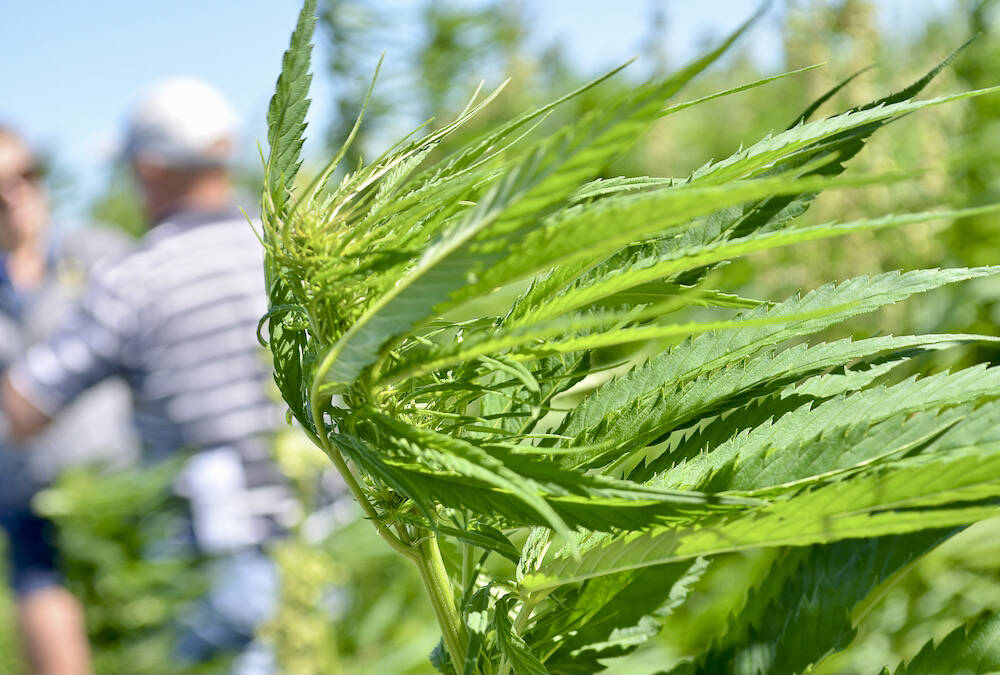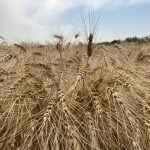HARVEST Lack of summer rains lowered early harvest soybean and dry bean yields, judging by the first beans to hit the bin
Acres are up but yields are trending down for soybeans and dry beans across the province this year, according to Manitoba Agriculture pulse specialist Dennis Lange.
“The key word this year is variability,” he said. “It all depends on when you got that rain, or if you got that rain.
“If you got that rain, generally, harvest is moving along at a pretty good pace right now but there are going to be some lows in areas that didn’t get any significant rainfall.”
Why it matters: All Manitoba farmers dealt with patchy rains in 2023. Pulse growers are now seeing the effect.
Read Also

Canadian hemp stable, but stuck on growth
Canada’s hemp industry hopes hybrid varieties, better yields, clearer regulations and new markets can help the crop break past its ceiling and get Canadian farmers planting more hemp acres.
Soybean acres started to claw back some of their decline from last year, climbing to 1.5 million seeded acres in 2023. They had taken a significant hit in the wake of 2022’s wet spring. Less than one million acres went into the ground last season, a number not seen since 2012.
“A lot of it was growers deciding to maybe hold off on soybeans because it was getting to be a later year,” said Lange.
Those who did plant the crop in 2022 reaped big benefits. Conditions were friendly and yields jumped.
“We actually broke a record last year. Provincially, we [were] at 45 bushels per acre on average,” said Lange.
Today, the five-year average yield for the soybeans sits around 35 bushels per acre, while Lange put the 10-year average at 36. Current conditions indicate the 2023 crop will average around 34 bu./ acre.
“With the lack of moisture in some regions, especially in that July and August period, you really saw a yield drop in those early harvest beans,” Lange said. “For anything harvested towards the end of August and early September, those yields were coming in from 20 to 30 bushels per acre, and there were some under 20.”
He was unsurprised by those numbers because there wasn’t enough moisture to keep the beans from prematurely finishing off. Longer-maturing crops are likely better.
“What we are seeing now are areas that had better rainfall through July,” he said. “We are starting to see 30- to 40-bushel yields pretty consistently now.”
In areas that received good moisture, Lange says some soybean fields have 50 to 60 bu./acre.
As of Sept. 21, Manitoba soybean harvest was about 21 per cent complete, with the central region leading the way. About 45 per cent of soybeans were harvested in that region.
Lange said seed moisture is around 12 per cent, and some growers report green, immature seeds. Though those seeds will dry down, too many can be a problem.
“Use your judgment when you’re out there. If you’re seeing a lot of green pods come in, you may want to wait for a couple of days.”
Lange has also been questioned about pre-harvest aids like glyphosate or Reglone, but cautioned farmers not to apply too early and to be mindful of any maximum residue level requirements.
“What’s really important if you’re growing a food-grade soybean is to make sure you have that discussion with your buyer to make sure that what you’re doing in that field is going to meet their requirements for export,” said Lange. “You don’t want to be going into early-stage issues with MRLs; that could be very costly in the end.”
Dry beans
Much like soybeans, dry bean acres were greater this year at 140,000, after bottoming out last year at 115,000.
Pinto bean acres jumped from 61,000 to 82,000 and black beans jumped from 20,000 acres to 30,000. Navy beans, kidney beans and cranberry bean acres remained relatively consistent year-over-year.
“When you look at the yield in 2022, we had near-perfect growing conditions for dry beans,” said Lange.
Dry bean growers in 2022 saw record yields as well, with a high of just over 2,300 pounds per acre. But once again, Lange predicts yields slightly below average yields this year of 1,700 lb./acre. The five-year average for dry beans is 1,860 lb./acre and the 10-year average is 1,776 lb.
Seed moisture has been lower because of dry conditions. Lange puts it in the 12-13 per cent range, but added that, “even with the drier seed moisture, the crack seed coats have been low, typically under 10 per cent.”
Early yields range from 1,200-1,500 lb./acre, but Lange said those numbers are beginning to improve.
“Now we’re getting into the harvest portion here where the better quality beans are coming off, the beans that had more moisture, so our ranges are anywhere from 1,500 to 2,500 lb./acre.”
Hard frost has been reported in a few regions, but didn’t cause significant damage.
“Frost on dry beans can be quite devastating if the crop isn’t mature enough, but in these instances, because there was green leaf material, it actually protected the pod,” Lange noted.
Dry bean harvest was expected to wrap up by the end of September.
















